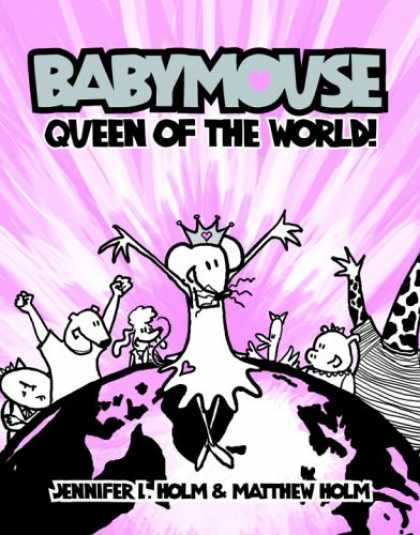
“It has been said that guardian spirits watch over and protect small children, and that may be so. But there are also stories of children who find the courage to protect themselves. Such is the story of Hansel and Gretel.”
Just as in her retelling of Cinderella, Cynthia Rylant again forgoes beginning the traditional tale of Hansel and Gretel
with the words, “Once upon a time…” and instead, pulls us into the story using beautifully-crafted and poetic language that leaves us anxious to turn the page and read her version of the tale we already know.
When the story begins, Hansel and Gretel are free, happy, and unaware of their unforeseeable future. Although the text tells us that their stepmother blames them for the family’s unfortunate circumstances, the illustration shows the children running excitedly towards their home—past their stepmother—looking like they are going to give some flowers that they found to their ill father. It is apparent that although the stepmother is evil, she may not have treated Hansel and Gretel in an obvious evil manner as of yet.
As I turn to the next page, I am immediately distanced from the action as Corace frames the illustration of the evil stepmother convincing the father that the children must go. I feel protected because of the distance, but at the same time—I want to jump in and do something!
Upon hearing the plan, Hansel vowed to protect his sister. “He possessed the courage his father lacked, and would do what was necessary to protect his sister.” As in Rylant’s version of Cinderella, the mention of important character traits is again emphasized in her version of Hansel and Gretel. We learned in Cinderella that the prince had loyalty, integrity, courage, and honor. In this story, we are learning the importance of courage as an important trait to possess.
As the story continues, we learn that courage is not just a trait possessed by males. Gretel shows her courage as she thinks of what her brother has always told her, “Take courage, Gretel,” and was able to show how smart she was as she tricked the witch into climbing into the oven.
Upon their return home, Hansel and Gretel realize their stepmother has died from eating a poisonous mushroom and that their father is happy for their return as he, “…picked them up in his arms and held them and cried a thousand tears for their safe return…and finally, released from her spell, their father, too, had nearly died from the shame of having abandoned his children.”
Rylant ends the book with, “Love would take care of the rest,” instead of the traditional, “They lived happily ever after.” This makes me feel like the story has been brought back to something more realistic. Meaning, challenging things may happen to the family again in the future, but love will help them get through it. I think this is a good message for all.
As I was reading another review of this book, it was pointed out that the illustrations of the people lack pupils. I thought something was different about the illustrations of the characters, but I could not place my finger on what it was until I read this other review. Why did Corace decide to leave out the pupils of the character’s eyes? Expressions of sadness, worry, and evil are clear nevertheless even with the lack of pupils.
Through Cynthia Rylant’s retelling of both Cinderella and Hansel and Gretel, she withstands the integrity of the essential elements of the original tale, but adds a new dimension by emphasizing important values that children, regardless of culture, can relate to and strive to possess.






